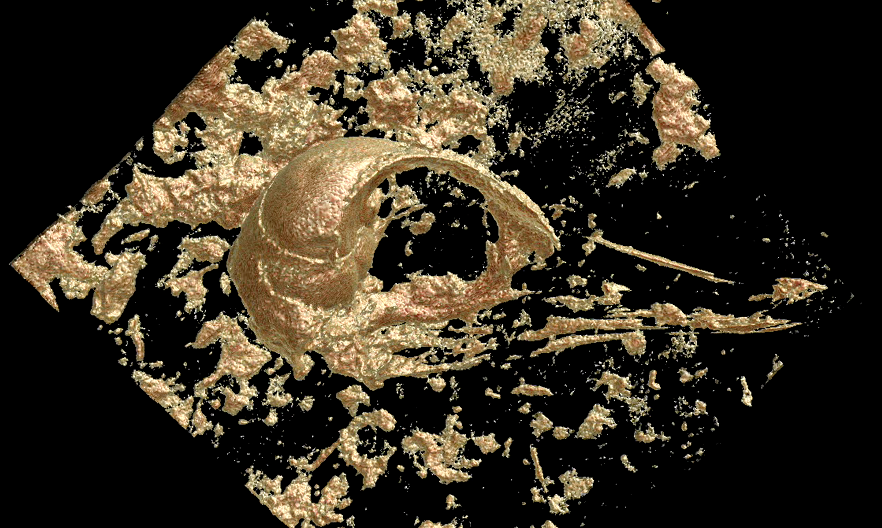Hackathon on volume segmentation builds LINXS community
LINXS hackathons bring scientists and clinicians from a wide range of backgrounds together with experts in 3D image visualization and quantification to identify solutions to the scientists’ diverse 3D image analysis challenges. The goal? To create a strong user community with capabilities and passion to push research frontiers forward through the use of x-ray and neutron imaging data.
– We’ve found that the format of the hackathon is perfect for starting up collaboration and discussion on different techniques, says Stephen Hall, Director of LINXS. Stephen is one of the driving forces behind the hackathons together with Rajmund Mokso, researcher at MAX IV and LTH, who is also the leader of the LINXS working group QUANTIM.
All the hackathons are based around the same idea: scientists (many of whom are early career researchers) meet with visualization and image quantification experts to discuss and build knowledge and networks on a specific area related to imaging techniques. Each scientist brings a 3D data set (or several) that the group discuss together over the course of two to three intensive days. The aim is that all participants come away with more knowledge, and a plan for how to visualize, quantify, and interpret the scientific content of their 3D images.
So far, the QUANTIM working group at LINXS has had three hackathons. The most recent hackathon focused on challenges relating to volume segmentation. The 3D data sets that were discussed included a fossilized bird skull and an ancient purse containing silver coins from the Gribshunden wreck.
– The idea was for participants to gain knowledge on volume segmentation. Rather than just visualizing the fossil skull or the shape of coins in the purse, we want to get information on the objects’ structures and characteristics: how big are the different parts of the brain and how thick are the coins, for example? This type of knowledge can give valuable insights into the evolution of animals, such as the bird in the study, our ancient history, and how our forebears interacted and traded.
Methods discussed included interactive volume segmentation and machine learning based approaches as well as visualization of 3D data and the labelled/quantified volumes.
– We like to set different challenges for each hackathon to bring different groups of scientists together, and to highlight different types of techniques. By organising the hackathons in this way, we are slowly building a user community around the world.
The latest hackathon took place in March, just as the border with Denmark closed due to the corona pandemic and a major storm closed the bridge from Copenhagen to Sweden and stopped many of the trains running in Sweden. This meant that some researchers and analysts could only participate digitally and the main organiser, Rajmund Mokso, was almost stranded on the wrong side of Öresund. In spite of the changed circumstances, the event was a great success notes Stephen Hall.
– Looking back, the hackathon was the start of a possible “new normal”. We had a bunch of people participating here in Lund, mainly from the University, but also a few from other parts of Sweden, and some of the lecturers participating online. Regardless of what happens in the future, we will definitely see how we might broaden participation by doing some aspects of the hackathons online. However, it is clear that the personal interactions are an essential component to the success of these events.
Imaging theme to close but the hackathons will continue
LINXS hackathons evolved as a working group activity under the Imaging Theme. While the theme will come to an end in December the hackathons will continue. In part, this continuation will be within the framework of the “QIM” collaboration between Lund University, the Danish Technical University (DTU), Copenhagen University (UCPH) and MAX IV. This collaboration has been an important component to the QUANTIM hackathons at LINXS and these events have also helped QIM in its mission to provide support for researchers in their 3D image analysis challenges.
– It is great to see this development since QIM benefited a lot in its early phase from the hackathons and our working group QUANTIM. We will now deepen our joint collaboration and continue the hackathons beyond the closure of the imaging theme, concludes Stephen Hall.
Read more about the QIM collaboration at the centre’s website or at LU.se.

